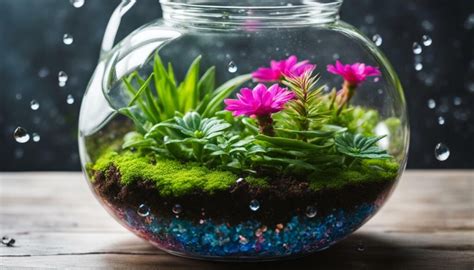Introduction
Terrariums have emerged as a captivating trend in home décor, offering a miniature ecosystem within a glass container. These enchanting creations bring a touch of nature indoors, providing aesthetic appeal and a sense of tranquility. However, maintaining a thriving terrarium requires a tailored care schedule to ensure the well-being of its inhabitants. This comprehensive guide will provide you with all the essential information to keep your terrarium flourishing in 2025 and beyond.

Terrarium Care Schedule
1. Watering
- Frequency: The watering frequency depends on the type of plants in the terrarium and the climate. Generally, water only when the soil feels slightly dry to the touch.
- Amount: Water sparingly, avoiding overwatering. Use a small watering can or dropper to deliver water precisely to the base of the plants.
2. Lighting
- Sunlight: Natural sunlight is ideal, but if unavailable, use artificial grow lights. Provide 10-12 hours of light per day.
- Position: Place the terrarium near a window or under grow lights, ensuring it receives bright, indirect light.
3. Temperature and Humidity
- Temperature: Most terrarium plants prefer temperatures between 65-80°F (18-27°C). Avoid extreme temperatures or sudden fluctuations.
- Humidity: Maintain 50-70% humidity by misting the terrarium regularly. Use a hygrometer to monitor humidity levels.
4. Ventilation
- Airflow: Ensure proper ventilation to prevent stagnant air and mold. Create small holes in the lid or use a slightly open lid.
- Circulation: Use a fan or air purifier to circulate air within the terrarium, promoting oxygen exchange.
5. Cleaning
- Regular Cleaning: Remove dead leaves and debris regularly to prevent decay and unsightly buildup.
- Glass Cleaning: Clean the glass with a damp cloth to remove fingerprints and water spots. Avoid using harsh chemicals.
6. Plant Care
- Pruning: Trim overgrown plants to maintain shape and prevent overcrowding.
- Fertilizing: Fertilize monthly with a balanced indoor plant fertilizer diluted to half strength.
- Troubleshooting: Address any plant issues promptly, such as yellowing leaves or wilting.
Strategies for a Thriving Terrarium
1. Choosing the Right Plants
- Consider hardiness: Opt for plants adapted to terrarium conditions, such as ferns, mosses, and succulents.
- Variety: Combine plants with different textures, colors, and heights for visual interest.
- Compatibility: Ensure chosen plants have similar water, light, and temperature requirements.
2. Creating a Balanced Ecosystem
- Substrate: Use a well-draining potting mix or terrarium substrate specifically designed for terrariums.
- Drainage Layer: Add a layer of activated charcoal or pebbles at the bottom of the terrarium for drainage.
- Hardscaping: Include rocks, branches, or driftwood to provide habitat and visual depth.
3. Monitoring and Adjustment
- Observe: Regularly check the terrarium for any changes in plant health, soil moisture, or humidity levels.
- Adjust Care: Make adjustments to your care schedule as needed based on observations and plant responses.
- Seek Advice: Consult with experienced terrarium owners or botanical experts for support and guidance.
Benefits of a Well-Cared Terrarium
- Improved Air Quality: Plants absorb toxins and release oxygen, improving indoor air quality.
- Stress Reduction: The sight and sound of a terrarium can promote relaxation and reduce stress.
- Educational Value: Terrariums provide a hands-on way to learn about ecosystems and plant biology.
Conclusion
Maintaining a flourishing terrarium is a rewarding endeavor that brings beauty, tranquility, and environmental benefits to your home. By following the comprehensive care schedule outlined in this guide, you can ensure the health and longevity of your terrarium’s inhabitants. Embrace the joy and satisfaction that comes with creating and nurturing a thriving miniature ecosystem in your own living space.





















